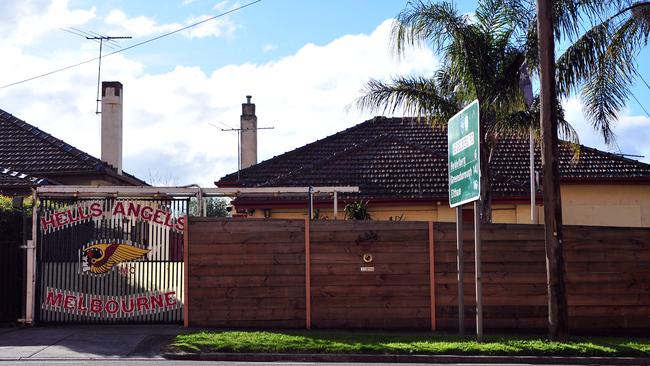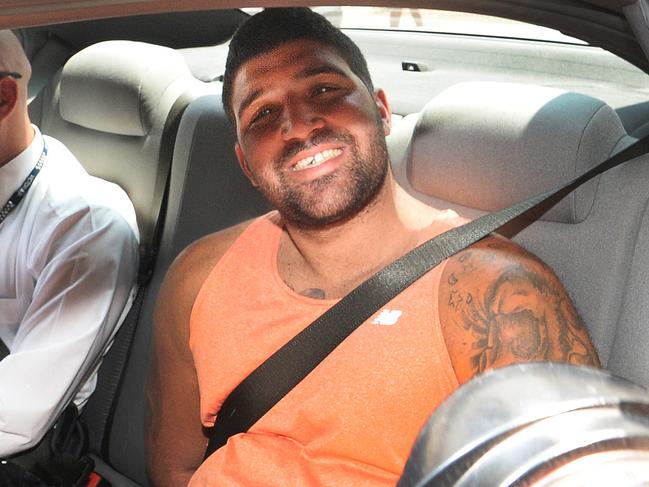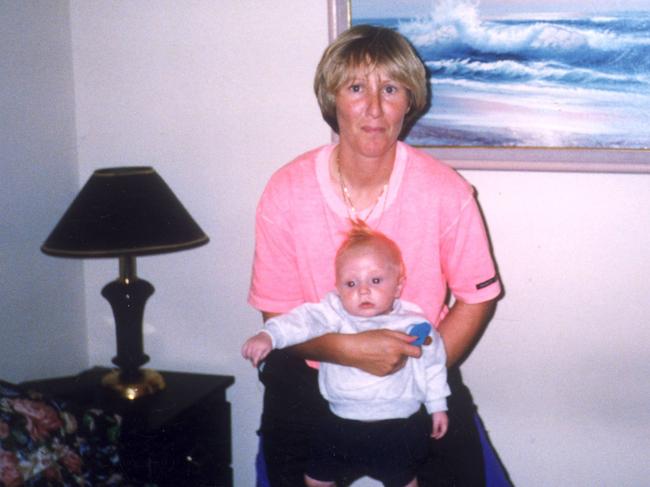Violent reality of life in Hells Angels
The promise of “brotherhood” is enough to draw new members, but the violent reality of life in the feared Hells Angels couldn’t be more different.

Police & Courts
Don't miss out on the headlines from Police & Courts. Followed categories will be added to My News.
The Hells Angels’ “death head’’ logo is one of the world’s most recognisable. And the Angels are so fiercely protective of their trademarked insignia that they have sued, many times, for unauthorised use of it.
The global gang, boasting members in five continents, retains a mystique 74 years after it was formed in California. It is also well known for its extreme violence.
Although the club traditionally prided itself as existing for rebellious, beer-swilling motorcycle enthusiasts, anyone in law enforcement will tell you the Hells Angels have evolved into anything but a legion of motorcycle rebels.
They will instead tell you the Angels, and their main “1 per cent’’ rivals are nothing other than criminal organisations.
Australian Federal Police Detective Superintendent Jason McArthur, who heads the National Anti-Gangs Squad, said outlaw motorcycle clubs promoted an ideal no longer in existence – a “brotherhood’’.
He said that like other organised crime syndicates, bikie gangs such as the Hells Angels had evolved into ruthless entities whereby a small number of high-ranking members at the top profited by getting those at the bottom to do the dirty work.
The cornerstone of the outlaw bikie business is drug trafficking, but it also includes standover work, bashings, arms dealing, kidnapping and murder.
Like the mafia, or any other hierarchical crime network, the focus was money and power, which could lead to internal feuding, Supt McArthur said. While new recruits were lured by the idea of the lifestyle, they were quickly forgotten once jailed.
“Interestingly, there is a lot of violence inside the gangs,’’ he said.
“People are threatened for doing the wrong thing or saying the wrong thing and not making enough money for the gang, not pulling your weight, which goes back to the top tier.
“A lot of the people who get caught up (with motorcycle gangs) are not protected by the gang when they get to jail … they’re dropped.
“The turnover in the gangs is quite high. That’s why they are always looking for young people to come in and fill these voids.
“These voids they are generally looking to fill is drug trafficking and money laundering.’’

Similar to most high-profile bikie gangs, most Hells Angels members have criminal records.
Former Melbourne-based Hells Angels president Mohammed Khodr, who spent more than seven years in jail, told The Felon Show podcast becoming a “patched’’ member was suffocating because of the police scrutiny.
“You may as well draw a f---ing target on your back. The days of just cruising around and making some money are over,’’ he said.
While the Hells Angels built a fearful reputation for their involvement in public incidents such as the killing of Meredith Hunter at The Rolling Stones’ free concert in Altamont, California, in 1969 – a gig where the gang was providing security – the club’s global expansion was taking shape.
HOW THE ANGELS HAVE LASTED SO LONG
The Angels have been in Melbourne since the original chapter was set up at Alphington in 1975.
In that time, other bikie gangs and chapters have come and gone, some dismantled by police and others unable to compete with the big boys.
The Angels are arguably the biggest and baddest. They have survived in no small part thanks to their discipline and superior organisation. And their interest in the amphetamine market reputedly remains as keen as when Peter John Hill first flew to the US to get the recipe for cooking the drug more than 40 years ago.
And even back then, those who went against the Angels did so at their peril. At one stage in the 1980s, the Australian charter flew in a US hit man to kill a Detective who threatened the freedom and financial interests of key gang members.
Since then, there have been various murders linked to the Angels, one of the most high-profile being that of Vicki Jacobs at Bendigo in June, 1999.
Ms Jacobs – shot dead as she slept beside her young son – had given evidence against her ex-husband, Gerald Preston, over an Adelaide double murder allegedly commissioned by the Angels.

The Bendigo case brought a lot of law enforcement pressure on the gang but, ultimately, no charges.
Now, they are again under fierce scrutiny over the murder of Adelaide gang associate Kerry Giakoumis, who was last seen alive at the Lipton Drive clubhouse of the Angels’ fearsome Nomads division.
The Lipton Drive stronghold in Thomastown in Melbourne’s north is a place with a dark history, not just for outsiders.
In 2007, leading member Terrence Tognolini was savagely bashed by clubmates after it came to light he had drugged and taken sexual advantage of young girls.
Two years earlier, Brendan Schievella was hauled from an Ivanhoe bar by three men in HA gear, bashed nearby, then driven to Lipton Drive.
He was held and tortured for up to five hours, later winding up in hospital with a partially amputated toe, a broken nose and severe bruising over much of the rest of his body. Schievella had no interest in sharing his story with police.
Careless talk costs lives when Hells Angels are listening. As young German tourist Faisal Aakbari almost found out in 2009 when he boasted to club members at a CBD strip joint that he was a member of the Angels back home.
They invited him back to Lipton Drive, where members showed the 18-year-old pictures of their German counterparts and asked him to name them.
He was flogged for hours after failing the test.


